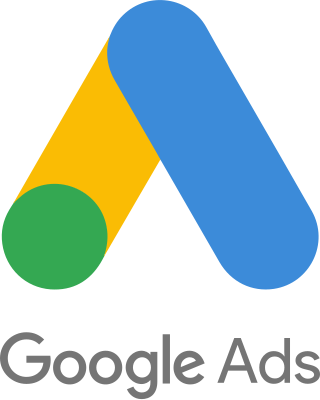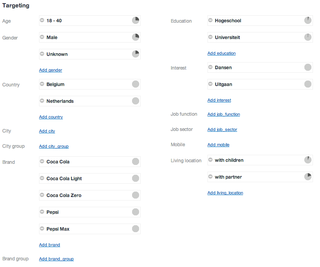See also
This article needs additional citations for verification .(January 2017) |
Pay for performance advertising (P4P) is a term used in Internet marketing to define a pricing model whereby a marketing or advertising agency will receive a payment or bonus from an advertiser for 'performance'. This may be in the form of each new lead or new customer obtained for the advertiser through the agency's online marketing efforts or some other 'performance' metric the agency and client agree upon before beginning.
Some prefer to limit the definition and scope of the potential work to be achieved - as in where the agency creates advertising campaigns and promotions to convert the maximum number of new leads or customers and gets paid for its work only when a new lead or a new customer is passed on to the advertiser. But this is not always a viable performance metric when the agency cannot fully control all aspects of the customer acquisition and conversion process.
Advertising with the purpose of generating a lead (which may be defined in a variety of ways), may not always result in a customer because there might be a number of steps after response to an ad and between first contact and final sale.
P4P advertising became popular with the advent of the internet that allows real time measurement of a marketing campaign's ROI (return on investment). It has reversed the traditional value proposition of advertising whereby an advertiser is required to pay for the creative work of the advertising agency and the media first regardless of the return on investment of the campaign. In the P4P model, the onus is on the agency to create a performing ad campaign that converts into good leads or customers if the agency wants to receive payments from its client. In contrast with traditional advertising agency pricing models, the advertiser pays the agency only after having collected leads or the revenues from its customers' purchase orders and not before.
Additional factors may further complicate the pay for performance advertising model. As mentioned above, a caveat to P4P advertising is the degree to which an agency can be held responsible for outcomes while controlling the variables involved. A client's online presence may or may not be appropriate to have ad traffic driven to it. There can be situations where a website or social media venue of a client is lacking in design effectiveness or content credibility, etc. These are not direct ad creation issues, but align more with brand trust and expertise, landing page conversion effectiveness, and more.
In cases where the supporting elements of an advertising effort may adversely affect the outcome of the advertising, the agency may require additional work be done as a preliminary project in getting the website to the point where it can more effectively convert advertising-driven traffic.
Different agencies may handle this situation in different ways due to the severity of the situation and to the degree improvements are needed. This issue can also spill over and into sales response and follow-up. Some agencies may even require training of sales staff to more effectively align conversations with the advertising to create more cohesive and relevant sales messaging.
In addition, ad retargeting may or may not be included as part of the pay for performance model. Some agencies may include retargeting as part of the overall work that produces the results they get paid for. Other agencies may prefer to produce a phase 1 winning campaign, get paid, then work phase 2 to improve results further. It is common for advertisers to test for improving results after establishing a "control" or initially acceptable level of results.
Pay for Performance need not to be confused with pay per click (PPC), which is a pricing model on the Web in which the advertiser pays when an Internet user clicks on its advertisement and visits its site. In some cases P4P could be risk-free to an advertiser whereas in a PPC campaign the advertiser takes the risk of the conversion rate between a click, a visit and an actual lead or sale.
This article needs additional citations for verification .(January 2017) |
Digital display advertising is online graphic advertising through banners, text, images, video, and audio. The main purpose of digital display advertising is to post company ads on third-party websites. A display ad is usually interactive, which allows brands and advertisers to engage deeper with the users. A display ad can also be a companion ad for a non-clickable video ad.
Affiliate marketing is a marketing arrangement in which affiliates receive a commission for each visit, signup or sale they generate for a merchant. This arrangement allows businesses to outsource part of the sales process. It is a form of performance-based marketing where the commission acts as an incentive for the affiliate; this commission is usually a percentage of the price of the product being sold, but can also be a flat rate per referral.
Cost per impression (CPI) and cost per thousand impressions (CPM) are terms used in traditional advertising media selection, as well as online advertising and marketing related to web traffic. They refer to the cost of traditional advertising or internet marketing or email advertising campaigns, where advertisers pay each time an ad is displayed. CPI is the cost or expense incurred for each potential customer who views the advertisement(s), while CPM refers to the cost or expense incurred for every thousand potential customers who view the advertisement(s). CPM is an initialism for cost per mille, with mille being Latin for thousand.

Google Ads formerly known as Google Adwords is an online advertising platform developed by Google, where advertisers bid to display brief advertisements, service offerings, product listings, and videos to web users. It can place ads in the results of search engines like Google Search, mobile apps, videos, and on non-search websites. Services are offered under a pay-per-click (PPC) pricing model, and a cost-per-view (CPV) pricing model.
Pay-per-click (PPC) is an internet advertising model used to drive traffic to websites, in which an advertiser pays a publisher when the ad is clicked.
Cost per action (CPA), also sometimes misconstrued in marketing environments as cost per acquisition, is an online advertising measurement and pricing model referring to a specified action, for example, a sale, click, or form submit.
Online advertising, also known as online marketing, Internet advertising, digital advertising or web advertising, is a form of marketing and advertising that uses the Internet to promote products and services to audiences and platform users. Online advertising includes email marketing, search engine marketing (SEM), social media marketing, many types of display advertising, and mobile advertising. Advertisements are increasingly being delivered via automated software systems operating across multiple websites, media services and platforms, known as programmatic advertising.
Search engine marketing (SEM) is a form of Internet marketing that involves the promotion of websites by increasing their visibility in search engine results pages (SERPs) primarily through paid advertising. SEM may incorporate search engine optimization (SEO), which adjusts or rewrites website content and site architecture to achieve a higher ranking in search engine results pages to enhance pay per click (PPC) listings and increase the Call to action (CTA) on the website.
In online marketing, a landing page, sometimes known as a "lead capture page", "single property page", "static page", "squeeze page" or a "destination page", is a single web page that appears in response to clicking on a search engine optimized search result, marketing promotion, marketing email or an online advertisement. The landing page will usually display directed sales copy that is a logical extension of the advertisement, search result or link. Landing pages are used for lead generation. The actions that a visitor takes on a landing page are what determine an advertiser's conversion rate. A landing page may be part of a microsite or a single page within an organization's main web site.
Pay-per-call is an advertising model which allows companies to advertise on TV and pay for each call generated from each TV commercial aired based on a performance model and agreed upon cost per call. The Pay Per Call model allows companies to avoid expensive cash media spends for TV and radio, in favor of only paying for qualified calls.
In Internet marketing, search advertising is a method of placing online advertisements on web pages that show results from search engine queries. Through the same search-engine advertising services, ads can also be placed on Web pages with other published content.

Targeted advertising is a form of advertising, including online advertising, that is directed towards an audience with certain traits, based on the product or person the advertiser is promoting.
Behavioral retargeting is a form of online targeted advertising by which online advertising is targeted to consumers based on their previous internet behaviour. Retargeting tags online users by including a pixel within the target webpage or email, which sets a cookie in the user's browser. Once the cookie is set, the advertiser is able to show ads to that user elsewhere on the internet via an ad exchange.
Pay-per-sale or PPS is an online advertisement pricing system where the publisher or website owner is paid on the basis of the number of sales that are directly generated by an advertisement. It is a variant of the CPA model, where the advertiser pays the publisher and/or website owner in proportion to the number of actions committed by the readers or visitors to the website.
Performance Marketing, also known as pay for performance advertising, is a form of advertising in which the purchaser pays only when there are measurable results. Its objective is to drive a specific action, and advertisers only pay when that action, such as an acquisition or sale, is completed.

The purchase funnel, or purchasing funnel, is a consumer-focused marketing model that illustrates the theoretical customer journey toward the purchase of a good or service.
A demand-side platform (DSP) is a concept that combines various software for advertisers to automate the process of buying and selling ad impressions in real time.
Ad text optimization (ATO) is the process of improving the performance of a text Pay Per Click (PPC) Advertisement on search engines by improving its Click Through Rate (CTR) performance both in terms of volume and quality of response, that is “more buyers, less browsers”. ATO is an element of Search engine optimization, where the subject is discussed in greater detail.
Site retargeting is a display advertising technique used by marketers to display advertising to people who have previously visited their website. The marketer includes a pixel within their webpage which sets a cookie in the user's browser. That cookie allows the marketer to target the website visitor with advertising elsewhere on the internet using retargeting.
Lead validation is the process by which sales leads generated by internet marketing campaigns are separated from other types of conversions. Lead validation is crucial for effective internet marketing management; without it, companies can neither accurately evaluate the results of, nor efficiently improve, their SEO, PPC, display advertising, email, content marketing and social media campaigns.